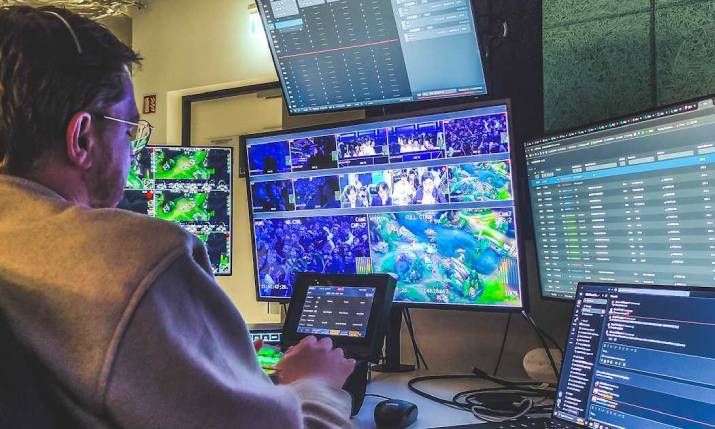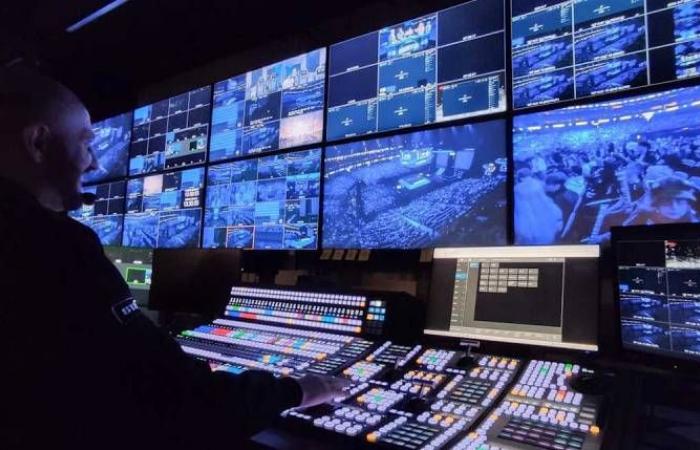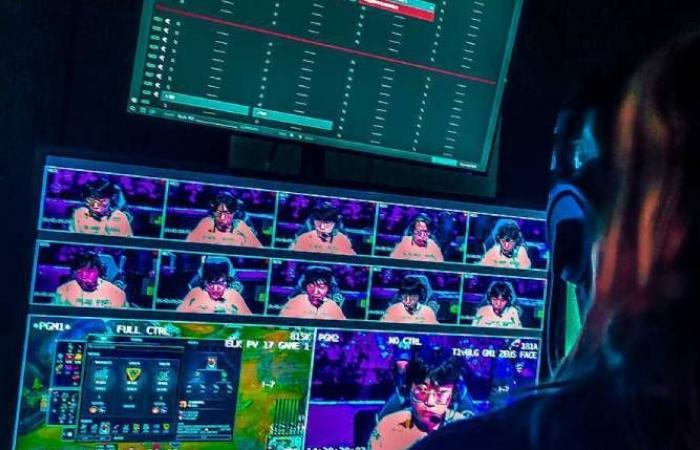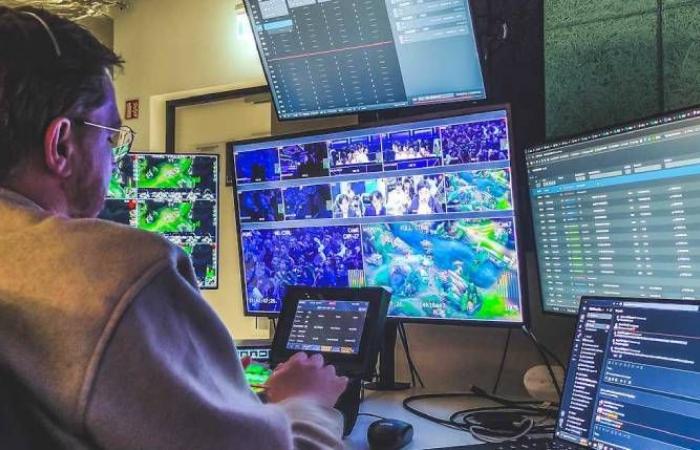For the Riot Games’ League of Legends Championships Final 2024, a technical director works from the Dublin RBC
At Riot Games’ League of Legends World Championship Finals 2024, which took place at the O2 Arena in London on 2 November, technical services partner on the ground NEP, Amazon Web Services (AWS), and Riot Games’ own Dublin-based Remote Broadcast Centre staffed by EMG / Gravity Media crew all contribute to an epic remote production. SVG Europe caught up with Alex Rybalko, broadcast engineering manager at Riot Games, and James Wyld, principal infrastructure engineer at Riot Games, to find out more.
Roles that were previously done on-site that are now done from Riot Games’ Remote Broadcast Centres:
- Observers
- Directors
- Technical directors
- Graphics
- Producers
- Audio operators
How is the show packaged to and from Dublin?
AR: As a remote production, our footprint on site in London is a production truck for the Opening Ceremony portion, then we transition into the sports side of the event and all of that is being done from Dublin. We have two control rooms working the world feed in English, and onsite we have four languages (French, English, Chinese, Korean) and eight co-streamers here.
What is AWS’s role on the Worlds?
AR: The vertical feed is a new product that we also offer to our co-streamers in addition to the traditional broadcast, and the core of the vertical feed automated production runs with the use of AWS technologies.
Read more Fan-eye view: Riot Games on creating a superior viewer experience and taking fans forwards in esports
As a zero-operator production, we can take the main show and produce a separate bespoke feed with its own set of graphics and assets where we can then dynamically substitute various elements, allowing creators and partners to customise their broadcast in a way that really caters to their specific audience.
When you add the vertical feed, we have more than 30 different versions of our broadcast being distributed around the world from the technical operations centre (TOC) at our Remote Broadcast Centre in Dublin. All of this is possible due to our use of AWS media services technologies.
JW: On the creative side, we’ve got a couple of specific AWS partnerships that play a large part in this production. One being “AWS Win Probability” where AWS is running a machine learning model for every second of the game to conduct binary predictive analysis to figure out which team is most likely to win. It’s a graphic that viewers will see pop up on screen during appropriate times of a match that ultimately works to enhance the viewing experience for fans.
The other is Global Power Rankings, which was first introduced at the start of Worlds 2024. When you have teams all around that don’t always play each other, it can be difficult to determine who has the upper hand going into match. AWS helped us come up with a model with numerous data inputs based around things like past history of the league, relative strengths of the teams within each league, and past international results just to name a few. This all works to create this new rankings system that creates another element of fandom and chatter, building more excitement for upcoming matches.
Separately on the production side, at our Remote Broadcast Centres powered by AWS we have all the operator workstations are running on Amazon Workspaces. Additionally, our distribution pipeline, which is how we compress the broadcast production signals and deliver them to partners and platforms all around the world, runs in the AWS Media Services Suite (AWS Media Connect and Media Live). That allows us to scale our production from a single world feed to 22 language partners around the world.
A Riot Games producer in Dublin, working on last weekend’s League of Legends Championships Final 2024
What is the value for Riot Games of the remote production model you use?
JW: With 30-plus variants of the Worlds broadcast coming out of the TOC, while it’s a lot to manage, we can see the value of the remote production model because all of the stuff anchored in the facility – observers, encoding, the vertical feed workflow – we’ve been able to float that from show to show throughout the tournament.
Read more Producer-eye view: Getting the lowdown on the League of Legends World Championships Finals 2024
We started in Berlin about a month ago and that set up has been able to stay relatively static in Dublin. We can throw the production from Berlin (where the earlier rounds of Worlds took place) to Paris (for the semifinals) without changing much in the RBC. Then we come to finals in London where that production is already set up from Paris. We have to do some tweaks, like adding a production truck onsite for the Opening Ceremony, but the core sport production can stay relatively the same in one location, rather than breaking down and setting up at the different stages of the event.
AR: Basically, every position that you would traditionally see in a production truck on site can now be based out of the RBC. We do run a hybrid operation because there are cases where sometimes it still makes sense for a specific role to be on site at the event, but the underlying platform and technology that everything is built on top of allows us to be flexible.
Facts on Riot Games’ League of Legends World Championships Finals 2024:
- 72 cameras
- SonyHDC
- Sony Venice
- Sony P50
- Sony FR7
- Sony FX3 and FX6
- Panasonic POV cameras
- Winch cam
- 2 cable cam
- 2 roof cranes
- 4 rail cams
- Arri trinity rig
- Jimmy jib
- 80 transmission lines
- 48 return lines
- 256 transmission audio channels

An observer on the League of Legends Championships Final 2024








